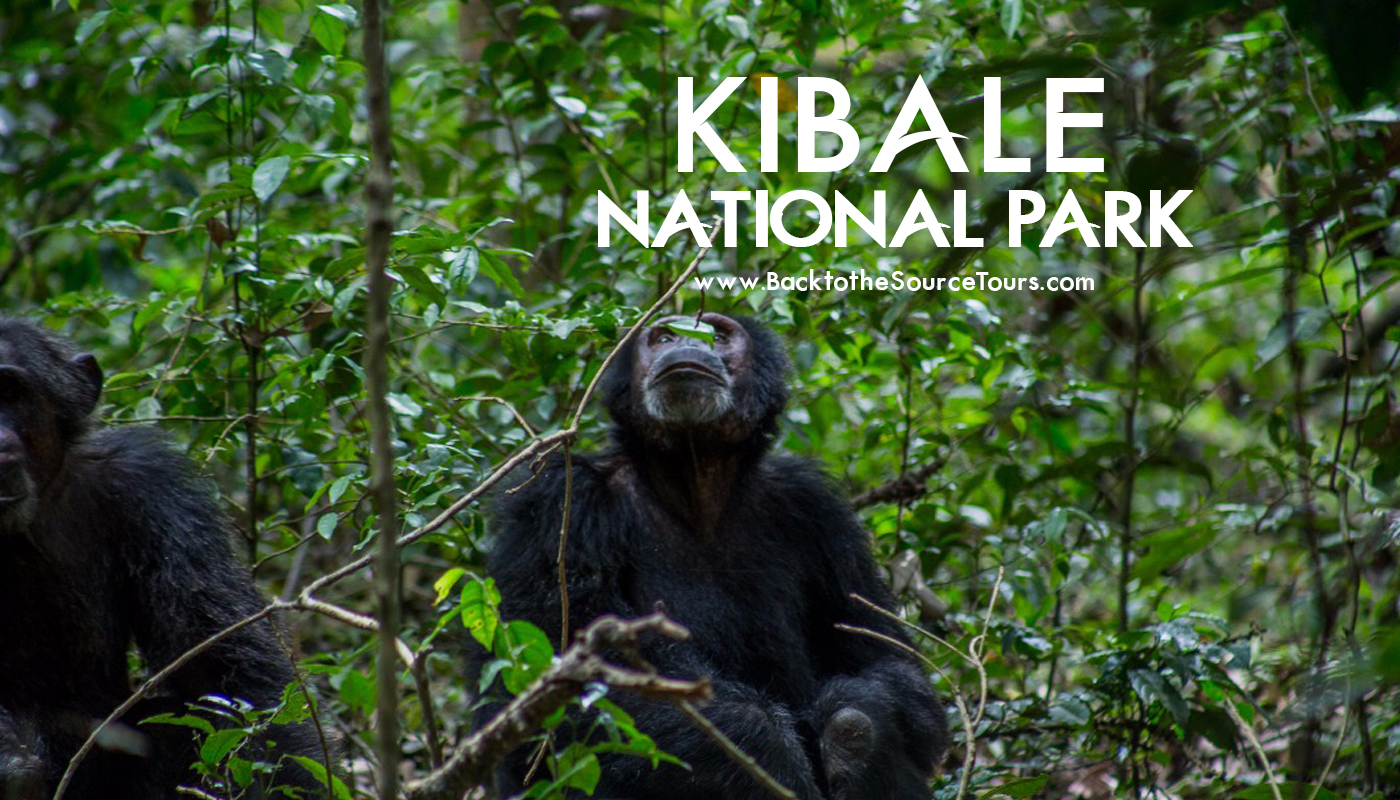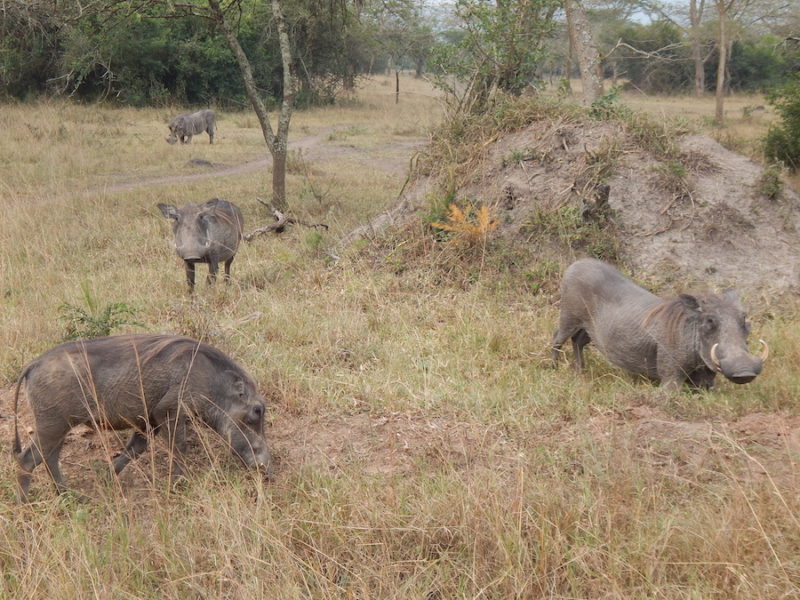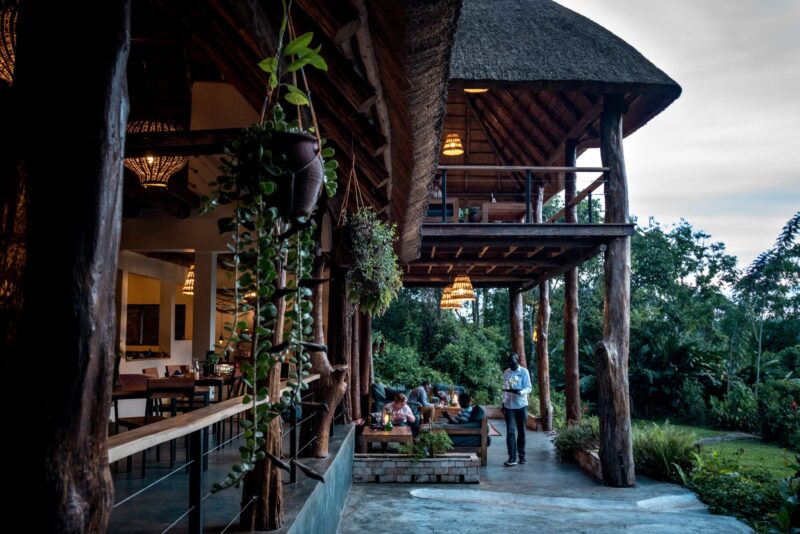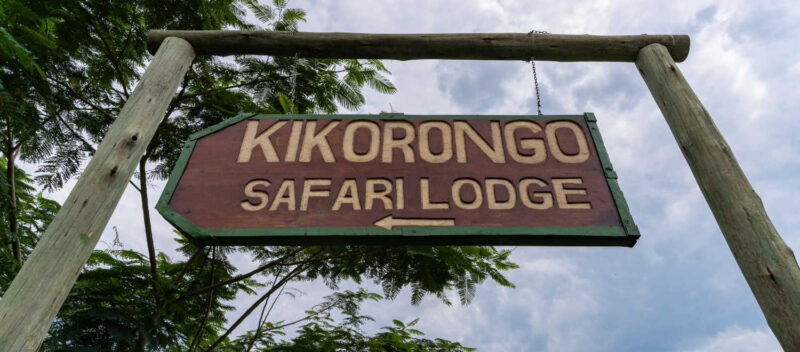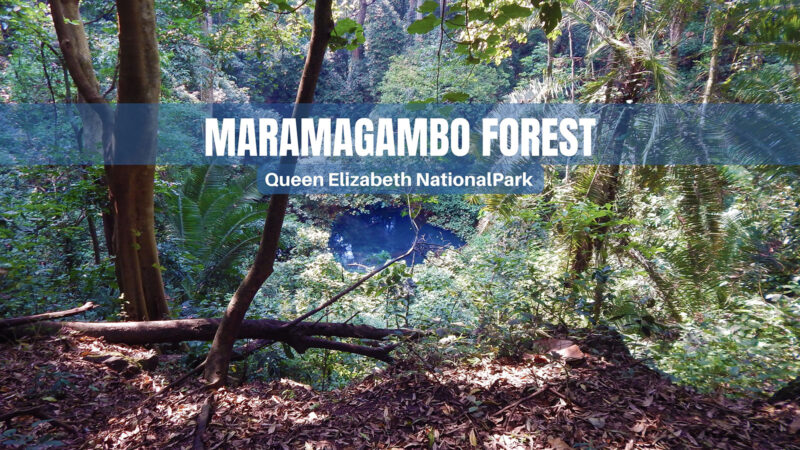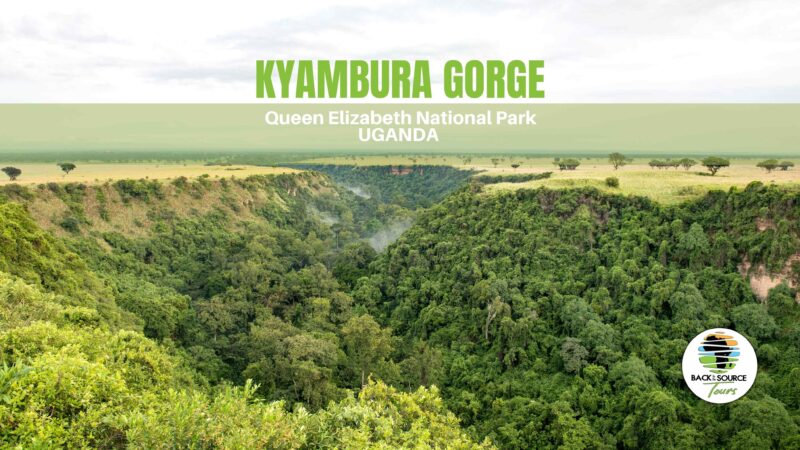Kibale Forest National Park is highest at the park’s northern tip, which stands 1,590m above sea level. The lowest point is 1,100m on the floor of the Albertine Rift Valley to the south. 351 tree species have been recorded in the park, some rise to over 55m and are over 200 years old. Kibale’s varied altitude supports different types of habitat, ranging from the wet tropical forest on the Fort Portal plateau to woodland and savanna on the rift valley floor.
Kibale National Park contains one of the loveliest and most varied tracts of tropical forest in Uganda. The forest’s grassland and swamp dominate the northern and central parts of the park on an elevated plateau. Kibale is famously known for Chimpanzee trekking.
The park is home to a total of 70 mammal species and over 375 species of birds. Most prominent among Kibale’s primates is the chimpanzee population surge of about 1,500 individuals, divided into at least a dozen different communities, four of which are habituated to humans.
Other wildlife found are Black and White Colobus Monkey, Red Tail Monkey, Mangabeys, L’Hoest”s Monkey, Red Colobus Monkey, Thomas Galago, Potto, African Civet Cat, Baboon, African Civet Cat, Forest Cape Buffaloes, African Elephants and more.
Kibale adjoins Queen Elizabeth National Park to the south to create a 180km-long corridor for wildlife between Ishasha, the remote southern sector of Queen Elizabeth National Park, and Sebitoli in the north of Kibale National Park.
The Kibale-Fort Portal area is one of Uganda’s most rewarding destinations to explore. The park lies close to the tranquil Ndali-Kasenda crater area and within half a day’s drive of Queen Elizabeth National Park, Rwenzori Mountains National Park, and Semulik National Park, as well as the Toro-Semliki Wildlife Reserve.
Chimpanzee Habituation Experience
The Chimpanzee Habituation Experience is a full or half-day activity that enables visitors to join researchers and habituation staff in the forest as they conduct their work. These chimp groups are less accustomed to human presence than those visited on the trekking path.
Early rising visitors have a chance to watch chimps leaving their overnight nests before feeding, patrolling, and resting until it is time to build new overnight nests at about 7:00pm. You must book well in advance as tickets for this experience are limited.
Other landmarks on the path west
- Bigodi Wetlands & Community Programs
- Queen Elizabeth National Park
- Maramagambo Forest
- Katonga
- Kisiizi Falls (listed below)
- Semuliki National Park
- Rwenzori Mountains National Park
The Kisiizi Falls are located in Kisiizi Parish in Nyarushanje Sub County in Rukungiri District of Western Uganda. The falls drop approximately 30 meters off a cliff at Kisiizi on the Rushoma River that snakes its way to Lake Edward.
Kisiizi has both historical and geographical significance.
Geographically, the falls are located in a forested area and gorge famous for birdlife including endemic species like the Ross Turaco, Double Toothed barbet, and the cinnamon Bee-eater. As a tourist area, it is famed for the scenic environment and trekking activities.
The monument at Kisiizi Falls overlooking the community present strong tourist potential because of the historical, geographical, and social significance, the falls are located along the tourist route linking the Virunga ranges famed for the Mountain Gorilla attraction, and the Ishasha sector of the Queen Elizabeth National Park. The location is attractive to nature lovers because of its rich concentration of bird species, site viewing, and nature trekking. Visitors can also enjoy canoeing along River Rushoma and a trek to the Top of the Falls.


